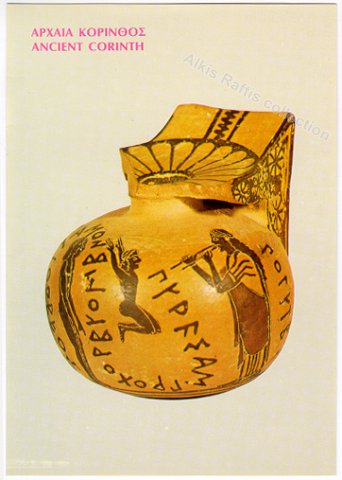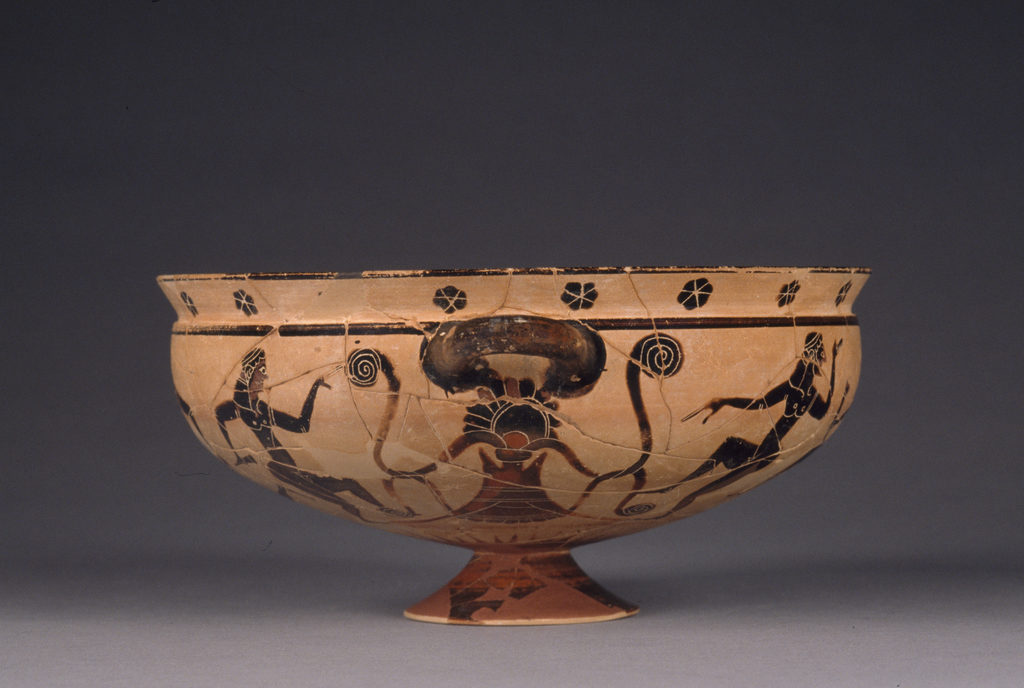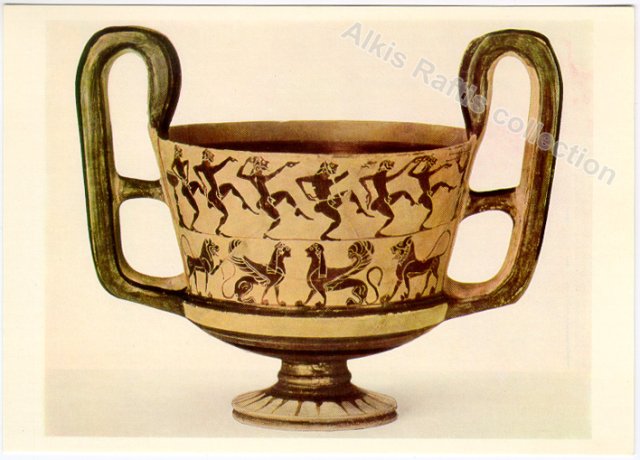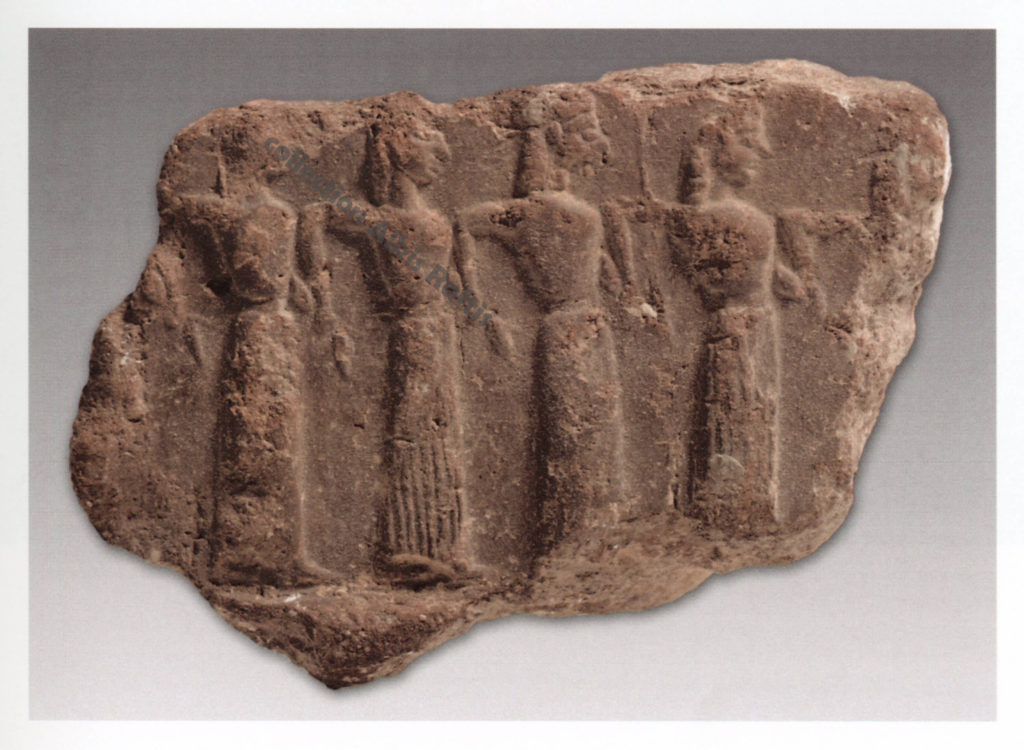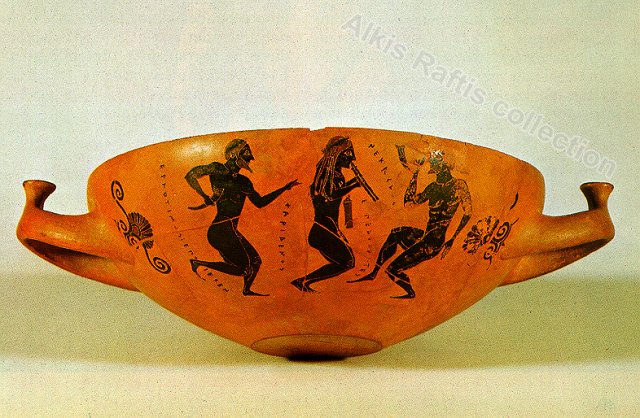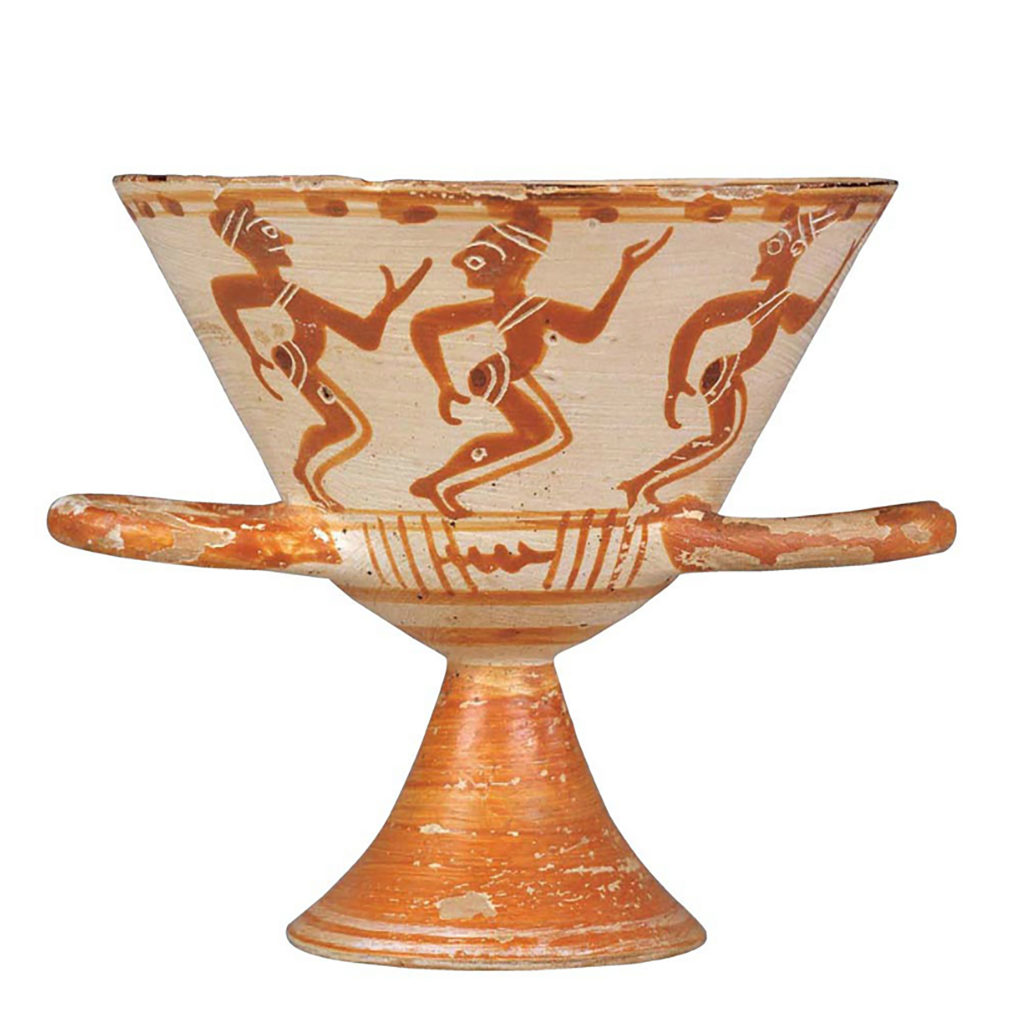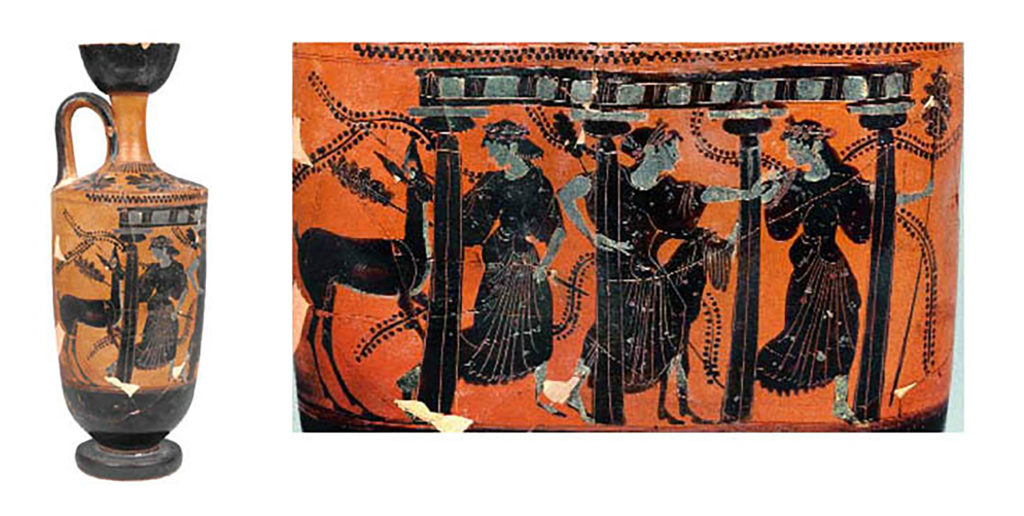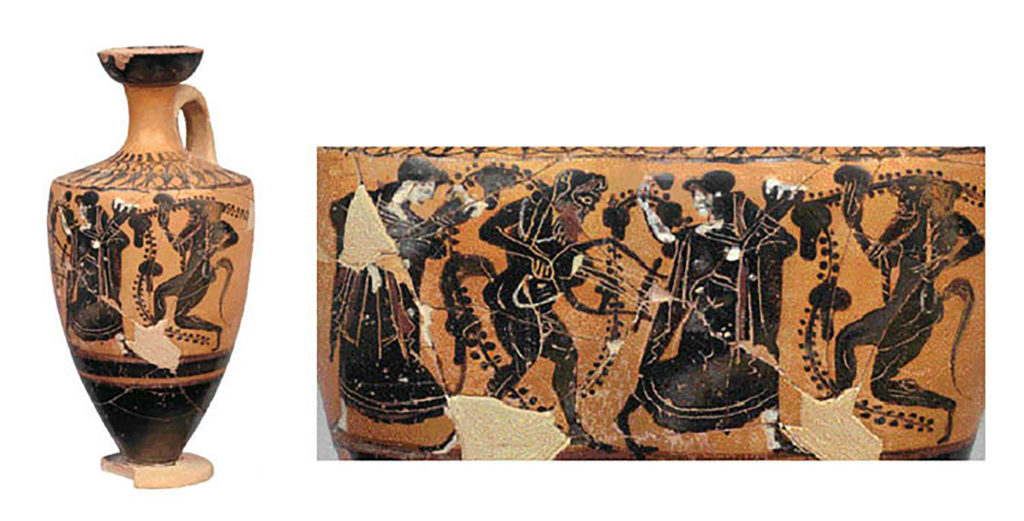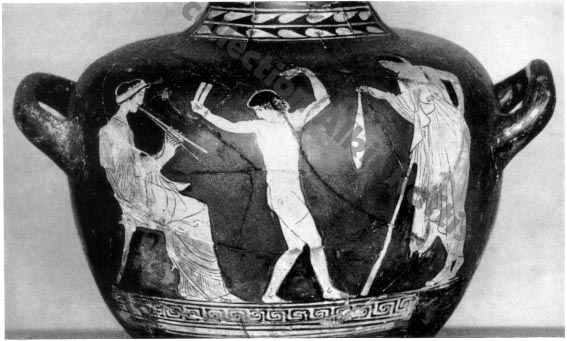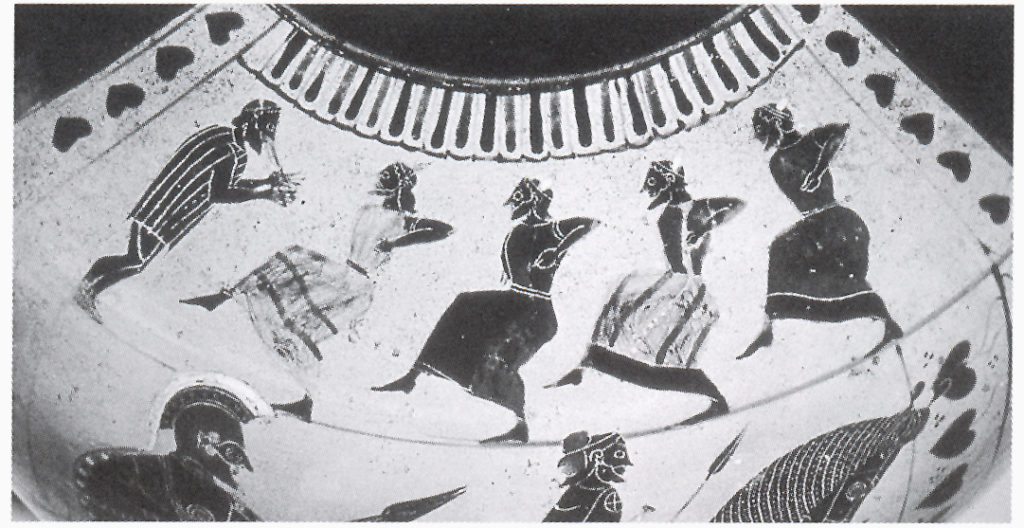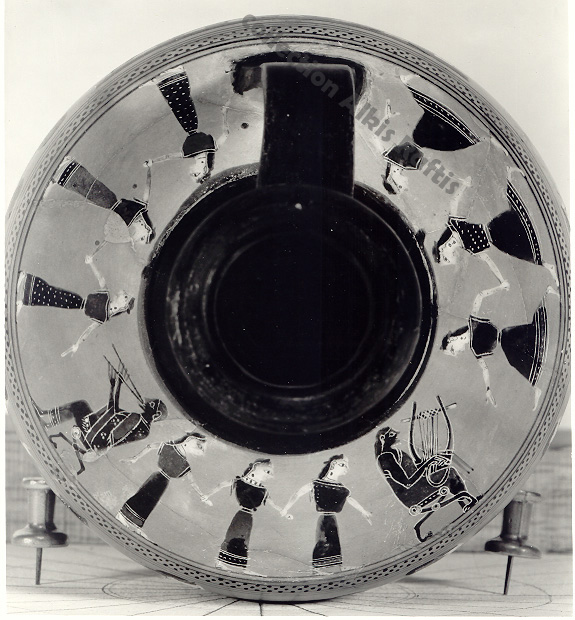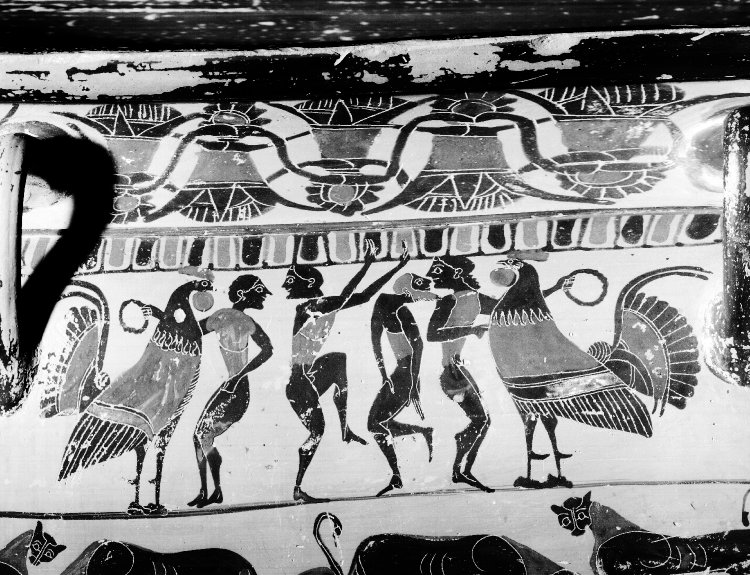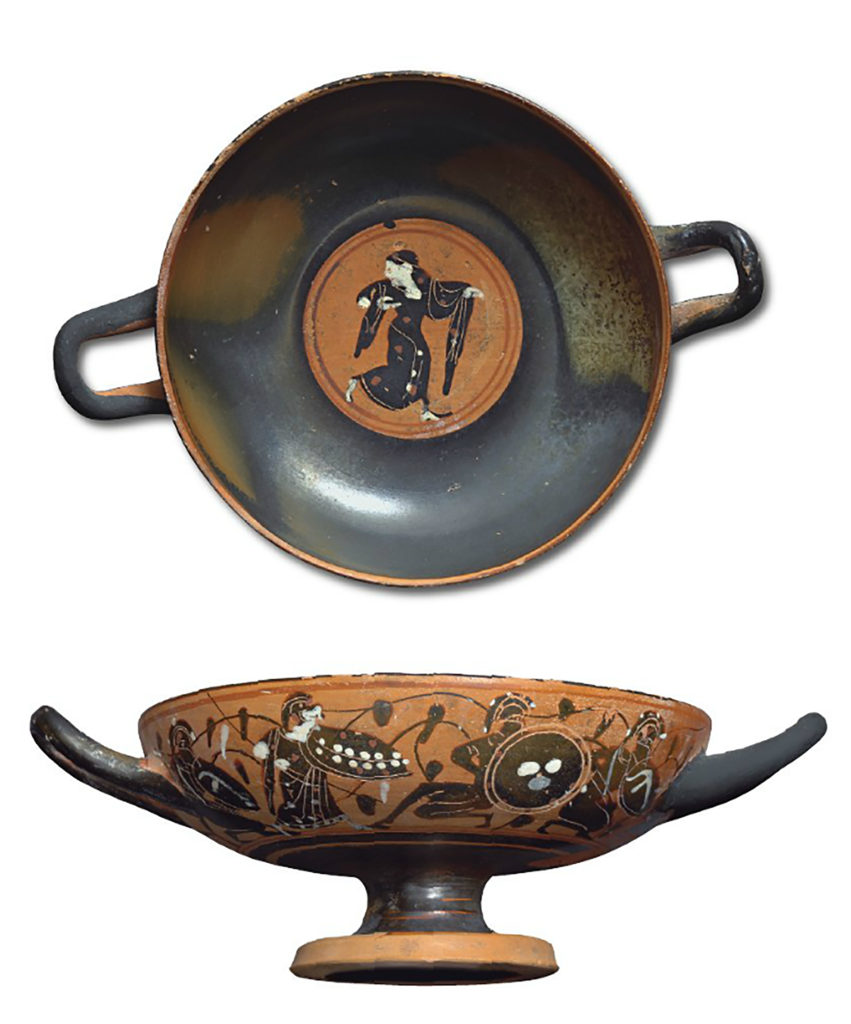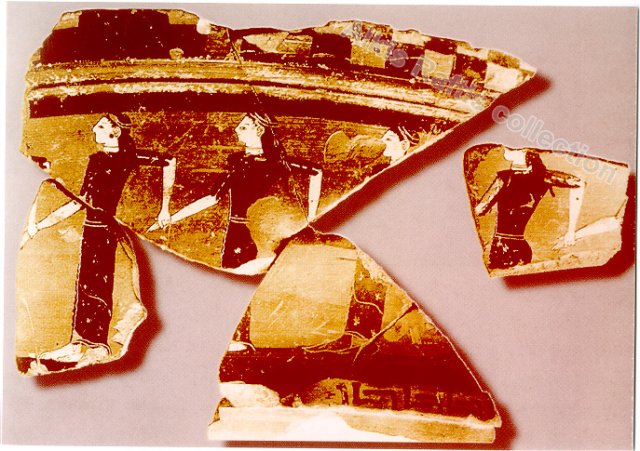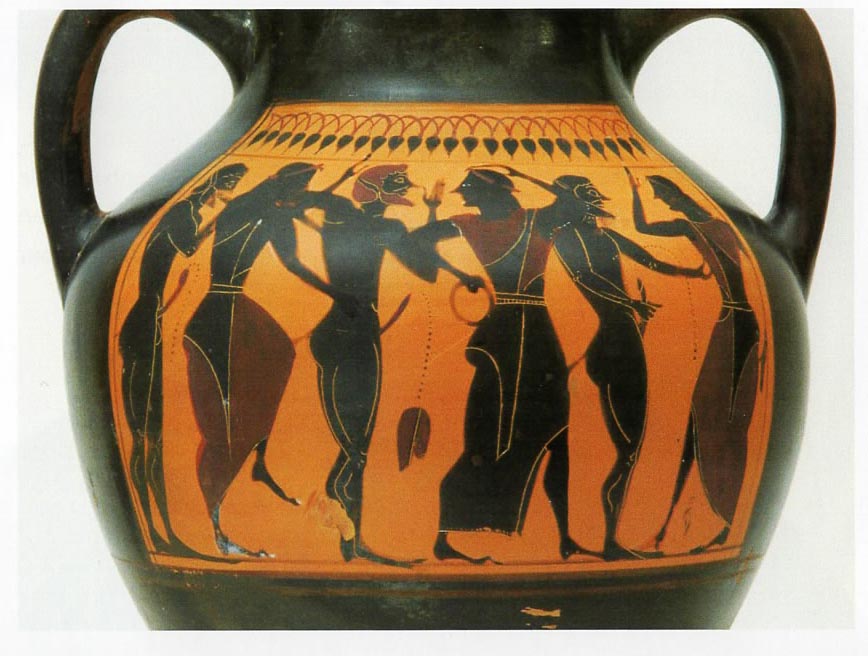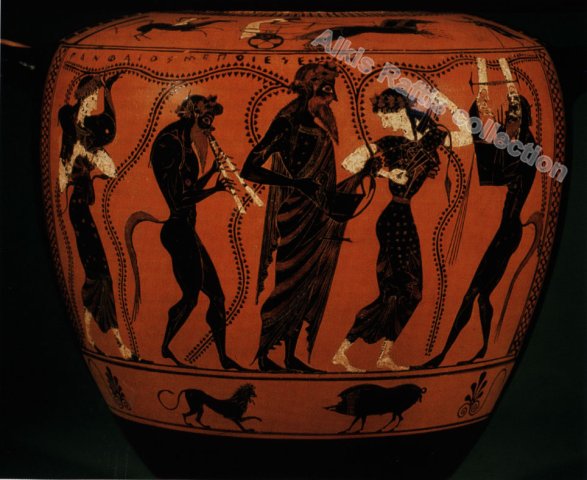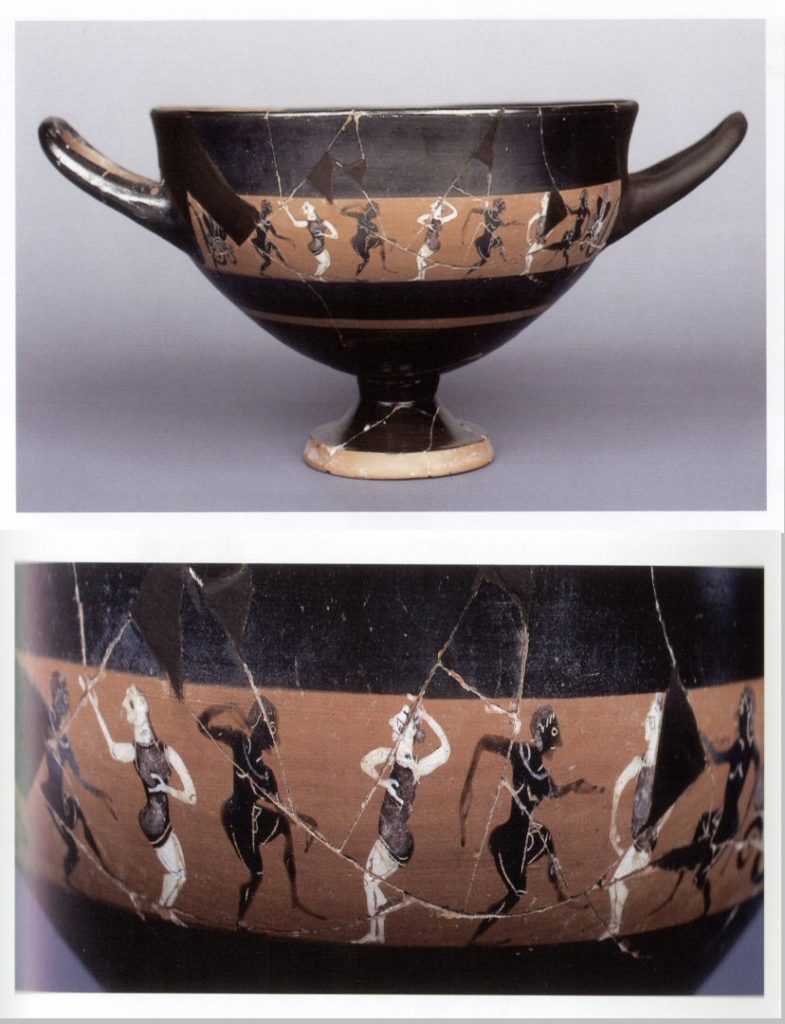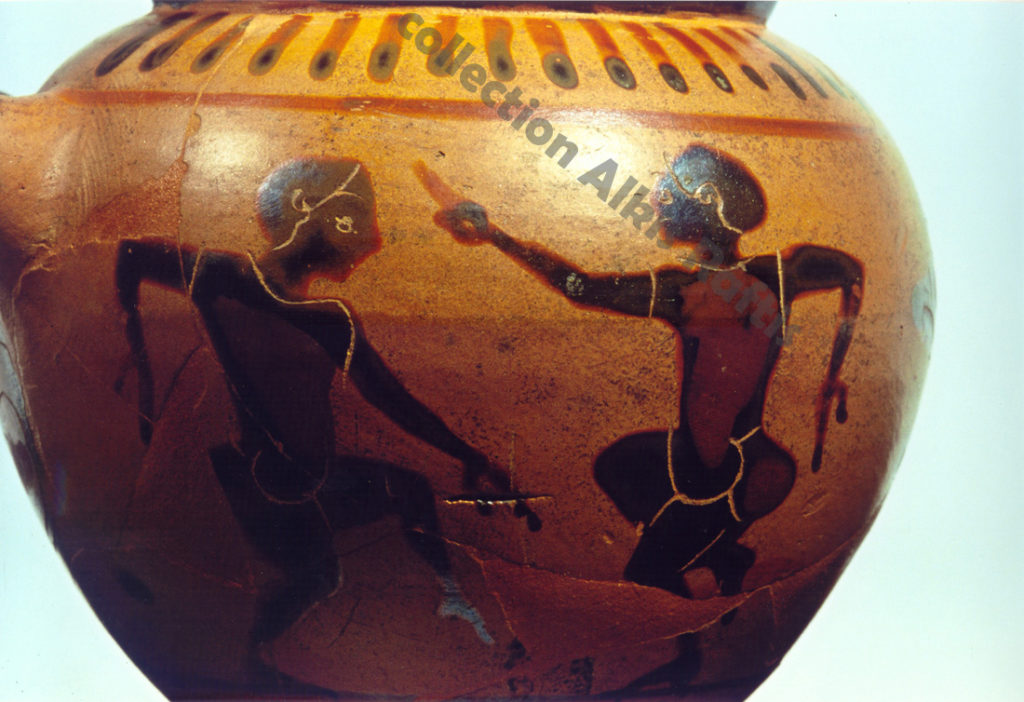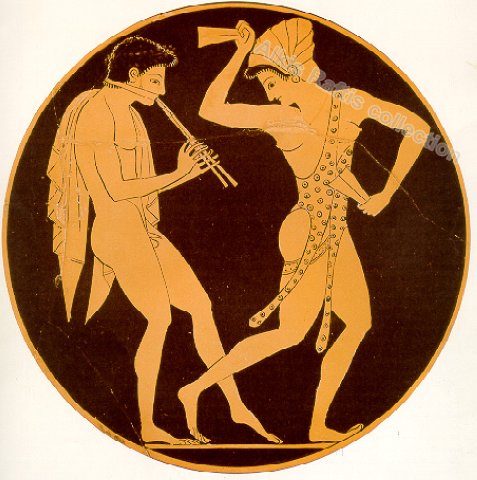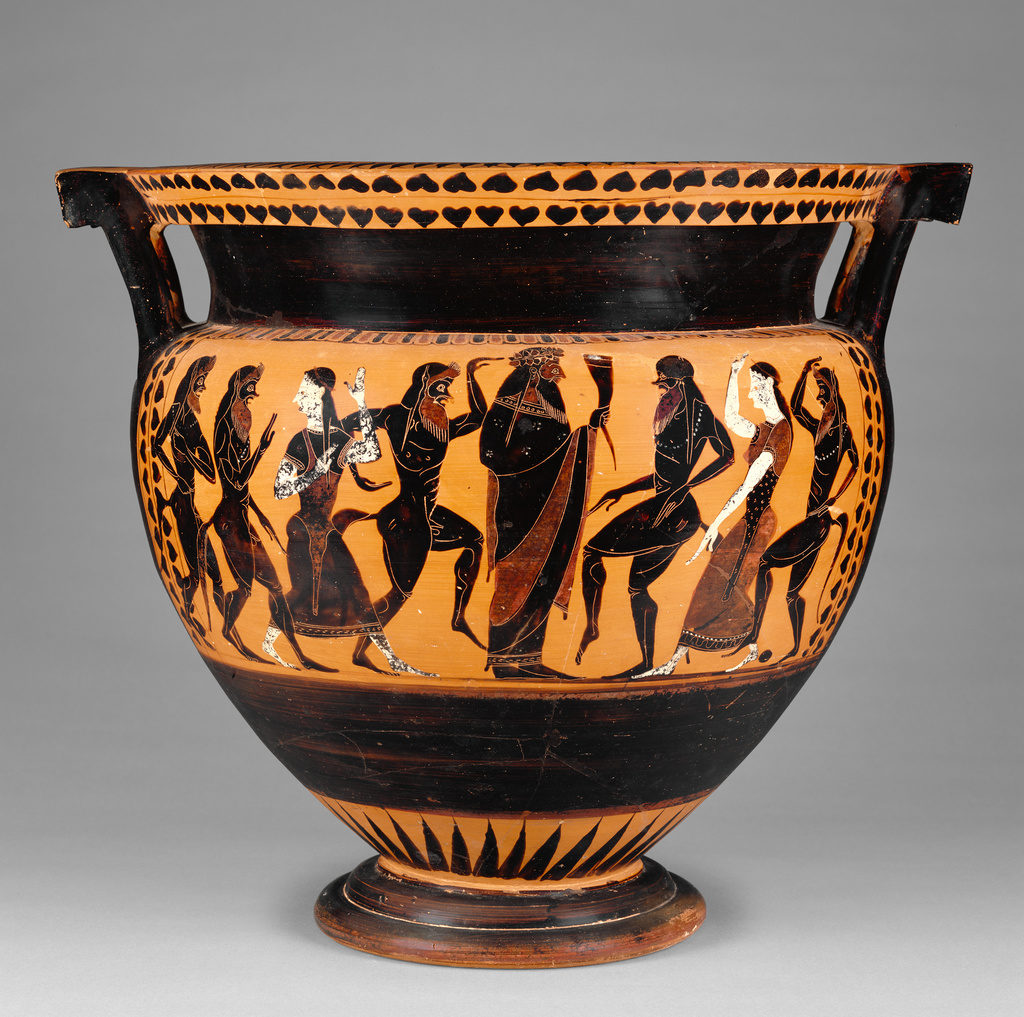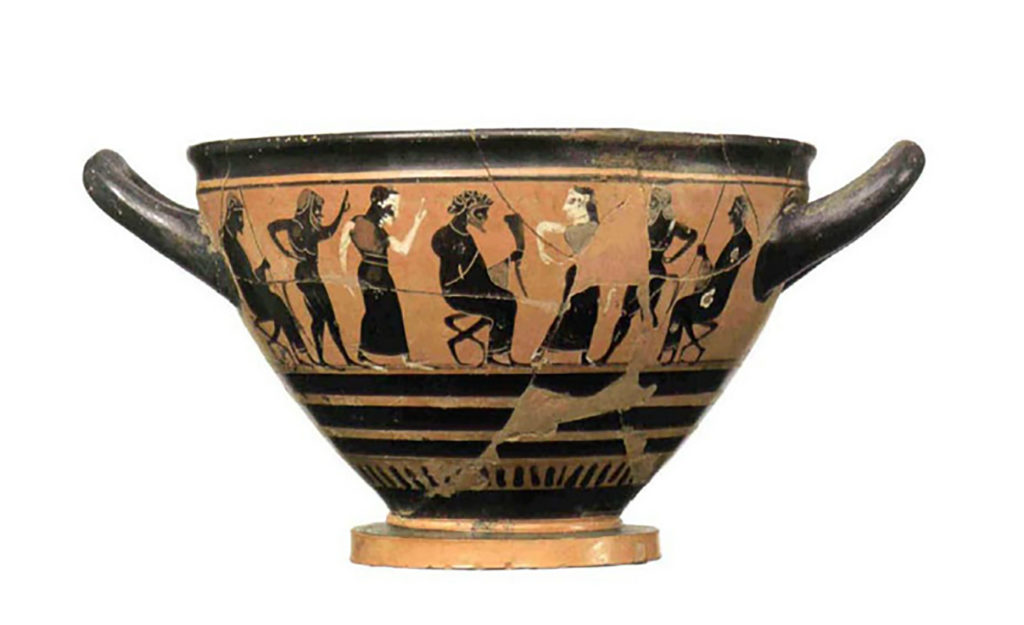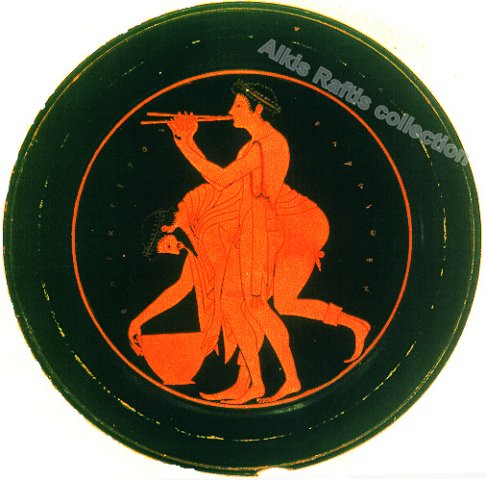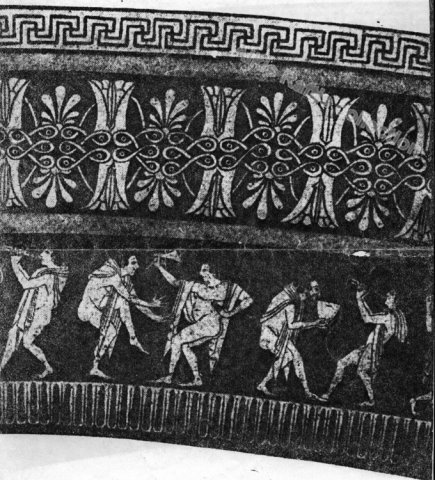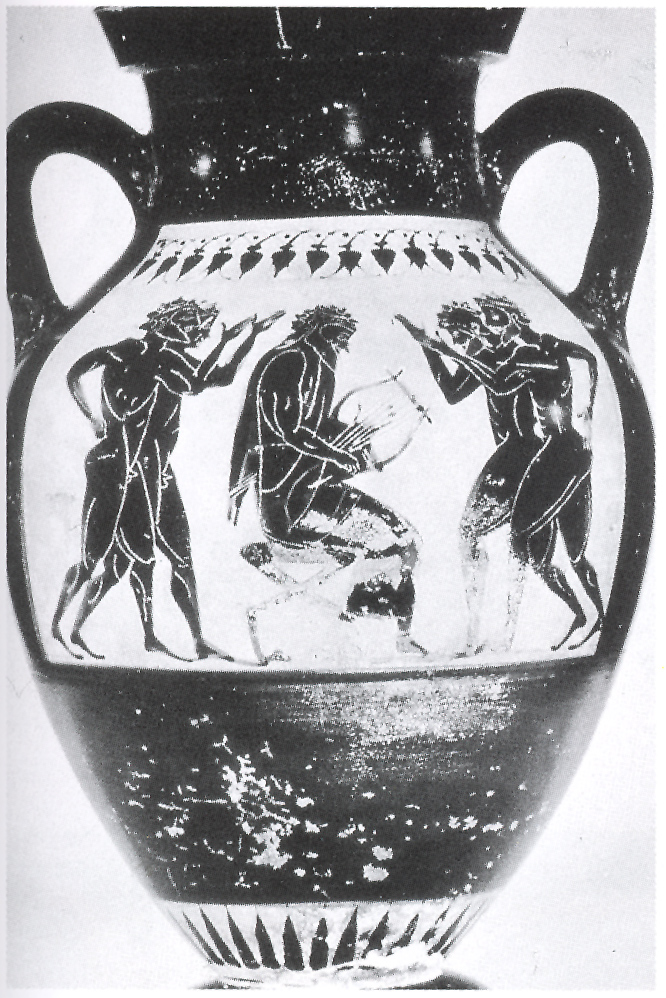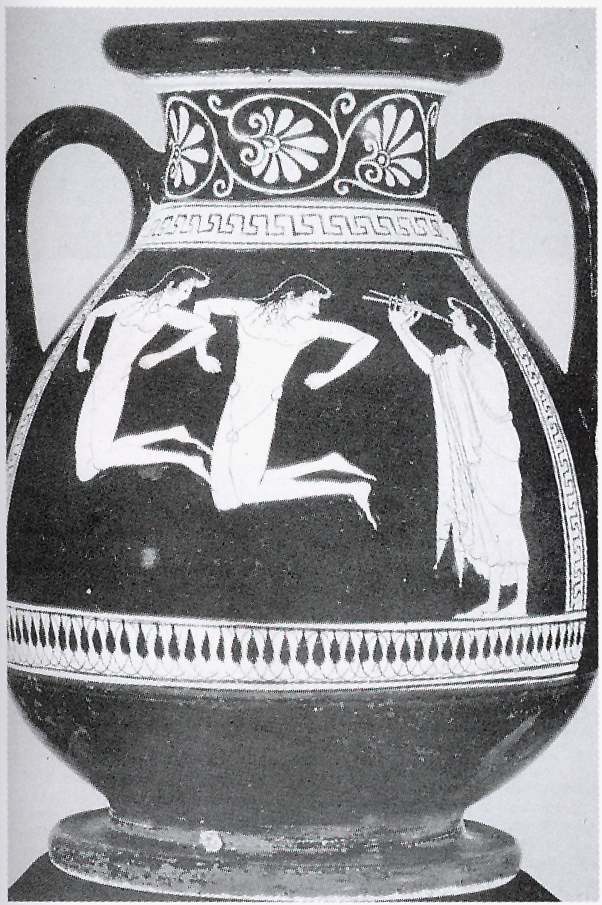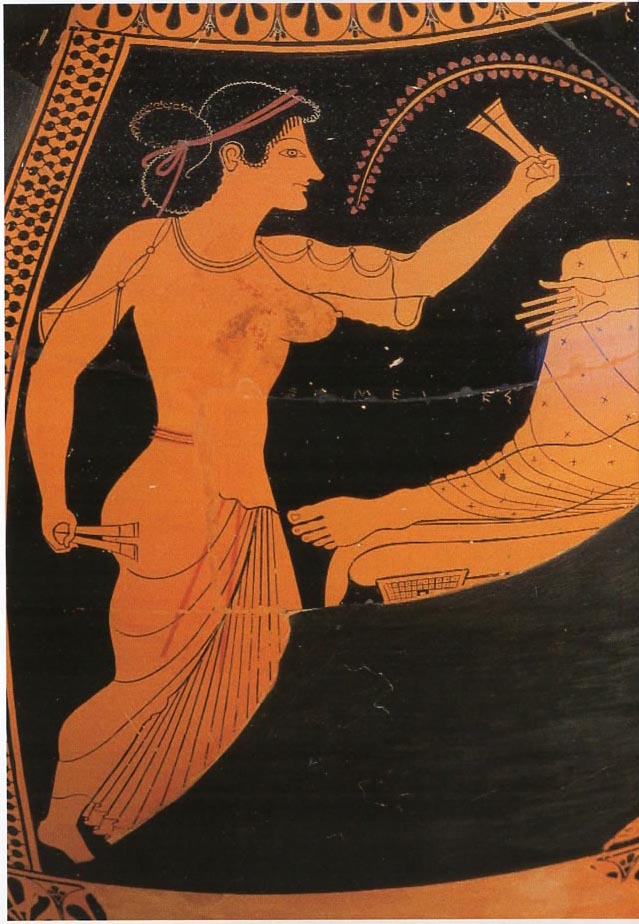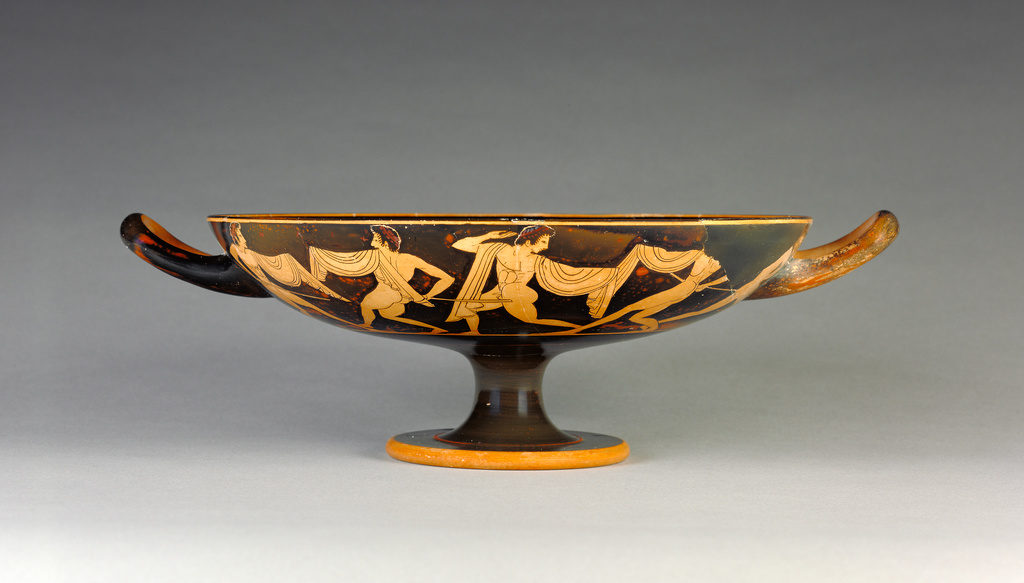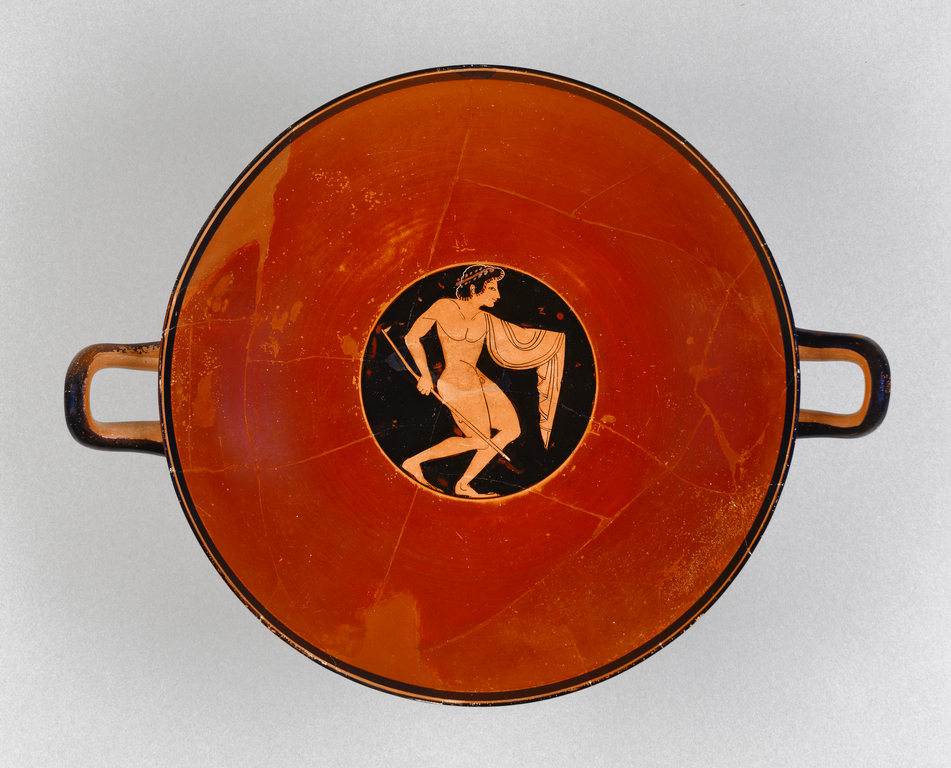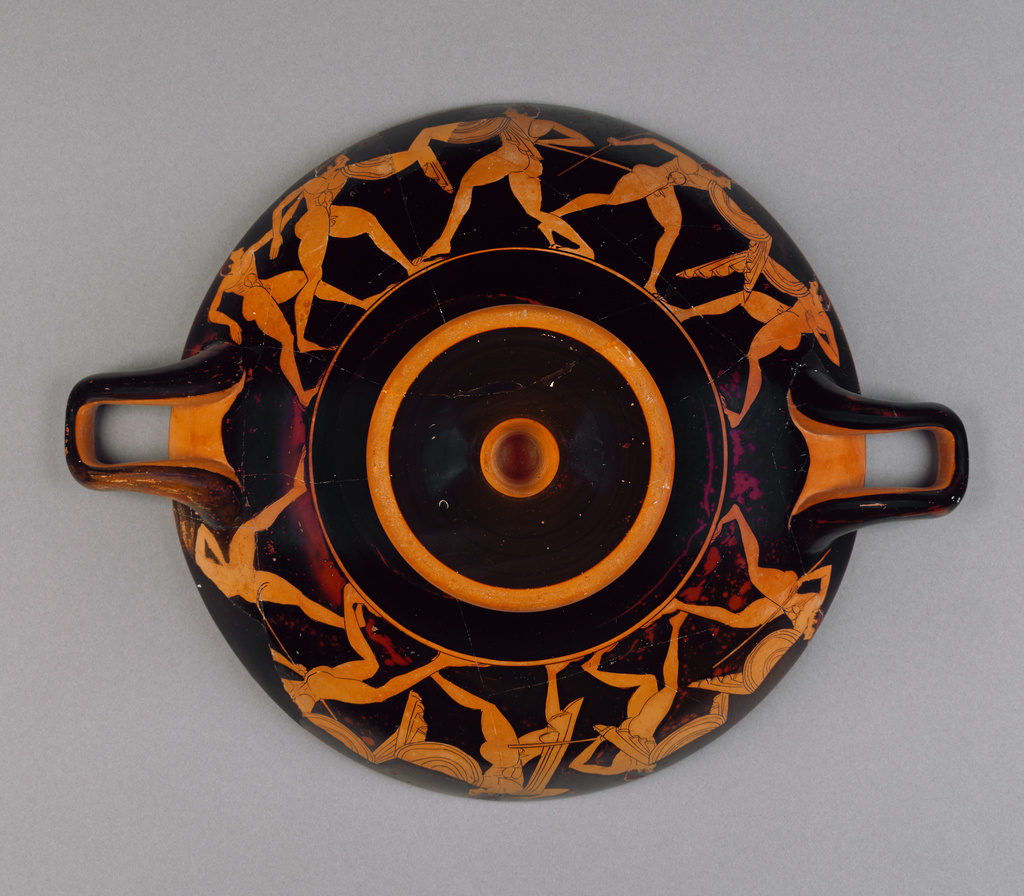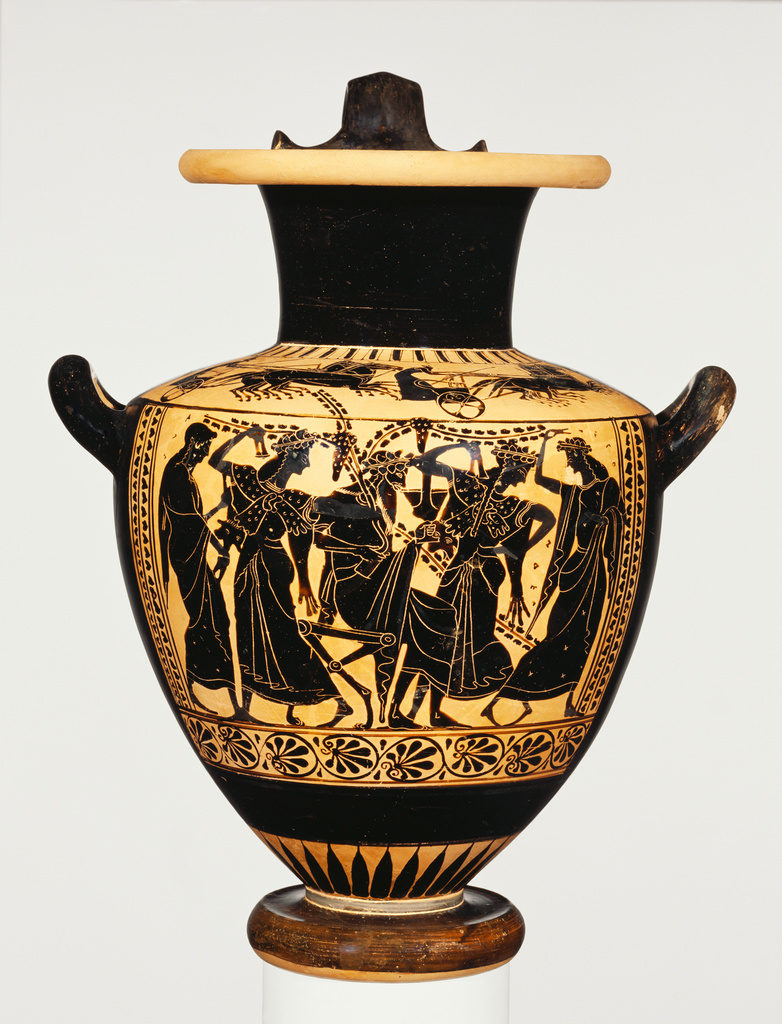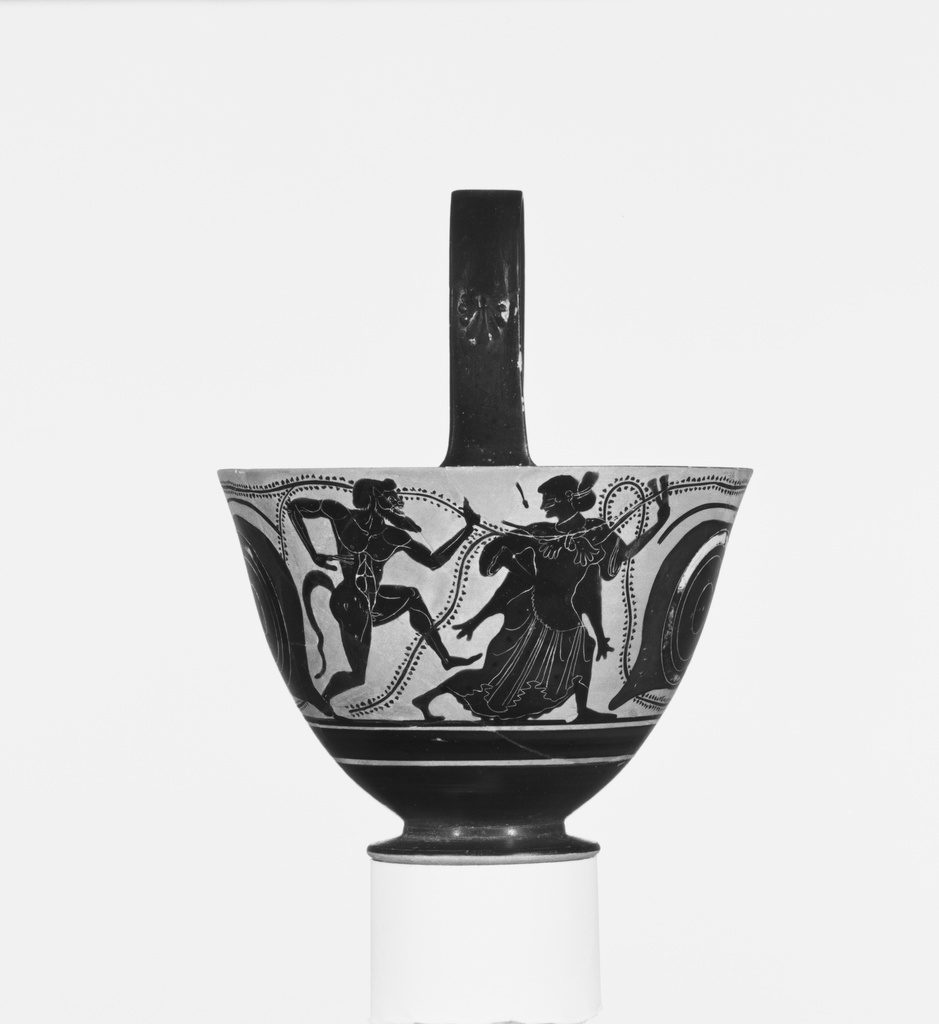Painting / -600 to -500
Terracotta kylix: Komast cup (drinking cup)
Painting, terracotta black-figure vase
575 B. C. approx.
9.5 cm height; 21 cm diameter
The black-figure technique was introduced into Athens from Corinth at the end of the seventh century B.C. During the early sixth century, Attic cup painters favored Corinthian motifs, like these dancing revelers. Indeed, the Komast cup is the earliest canonical type of Attic black-figure kylix.
Ancient Greece
Black-figured kylix (drinking-cup) possibly showing a scene from the “Attic Thesmophoria”
Painting, terracotta pottery, black-figure vase
555 B. C. approx.
26.67 cm diameter
Posibly found in Rhodes. Attic Thesmophoria, a fertility dance celebrated by the wives of Athenian citizens. On the other side of the vase is a representation of ritual ploughing. Demeter is the veiled figure seated at the far left-hand side of the dance scene: one hand is raised to her head in a gesture associated with mourning
Ancient Greece, Athens
Tumbler. Eight dancing youths. Terracotta black-figure vase. Greek, ca.
525–510 B.C.
Painting, black-figure vase, terracotta
8.5 cm height; 9 cm diameter
These youths are descendents of the komasts, the padded dancers that originally entered Athenian iconography from Corinth. We can interpret the figures here as young men in good spirits after a symposium (drinking party). Attic art. Eight dancing youths
Ancient Greece

